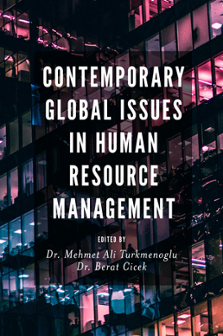
Index
Contemporary Global Issues in Human Resource Management
ISBN: 978-1-80043-393-9, eISBN: 978-1-80043-392-2
Publication date: 18 November 2020
Citation
(2020), "Index", Turkmenoglu, M.A. and Cicek, B. (Ed.) Contemporary Global Issues in Human Resource Management, Emerald Publishing Limited, Leeds, pp. 273-283. https://doi.org/10.1108/978-1-80043-392-220201019
Publisher
:Emerald Publishing Limited
Copyright © 2021 Emerald Publishing Limited
INDEX
- Prelims
- Introduction
- Chapter 1: Contemporary Career Approaches for the Needs of Today’s Individuals and Organizations
- Education Situation of Roma in Selected Central and Eastern European Countries
- Chapter 2: Exploring Appearance-based Discrimination in the Workplace
- Chapter 3: Diversity Management: Revealing the Need for a Context-specific Approach
- Chapter 4: Work–Family Life Balance in the Changing Business World
- Chapter 5: Human Resources Information Systems: A Recent Literature Survey
- Chapter 6: Digital Transformation and Creation of an Agile Workforce: Exploring Company Initiatives and Employee Attitudes
- Chapter 7: Human Resource Management in Knowledge Intensive Firms
- Chapter 8: Human Resource Development Requirements in Industrial Revolution 4.0
- Chapter 9: Addressing Training and Development Bottlenecks in HRM: Facilitating a Paradigm Shift in Building Human Capital in Global Organizations
- Chapter 10: Educating the Global-Minded Business Professional and Manager
- Chapter 11: Dealing with Contemporary Failings of Ethics, Training, and Wellbeing: A Developmental Foundation of Authentic Relations
- Chapter 12: A Sociological Perspective for Understanding the Transition to Retirement
- Chapter 13: The Future of Seafarers and the Seafarers of the Future from the Perspective of Human Resources Management
- Chapter 14: Understanding Organizational Culture and Managing the Effectiveness of Knowledge Transfer: A Case Study on Japanese Firms and their Business Affiliates in Malaysia
- Chapter 15: Human Resources Management in Non-profit Organizations: An Effective Approach to Manage Volunteers
- Index